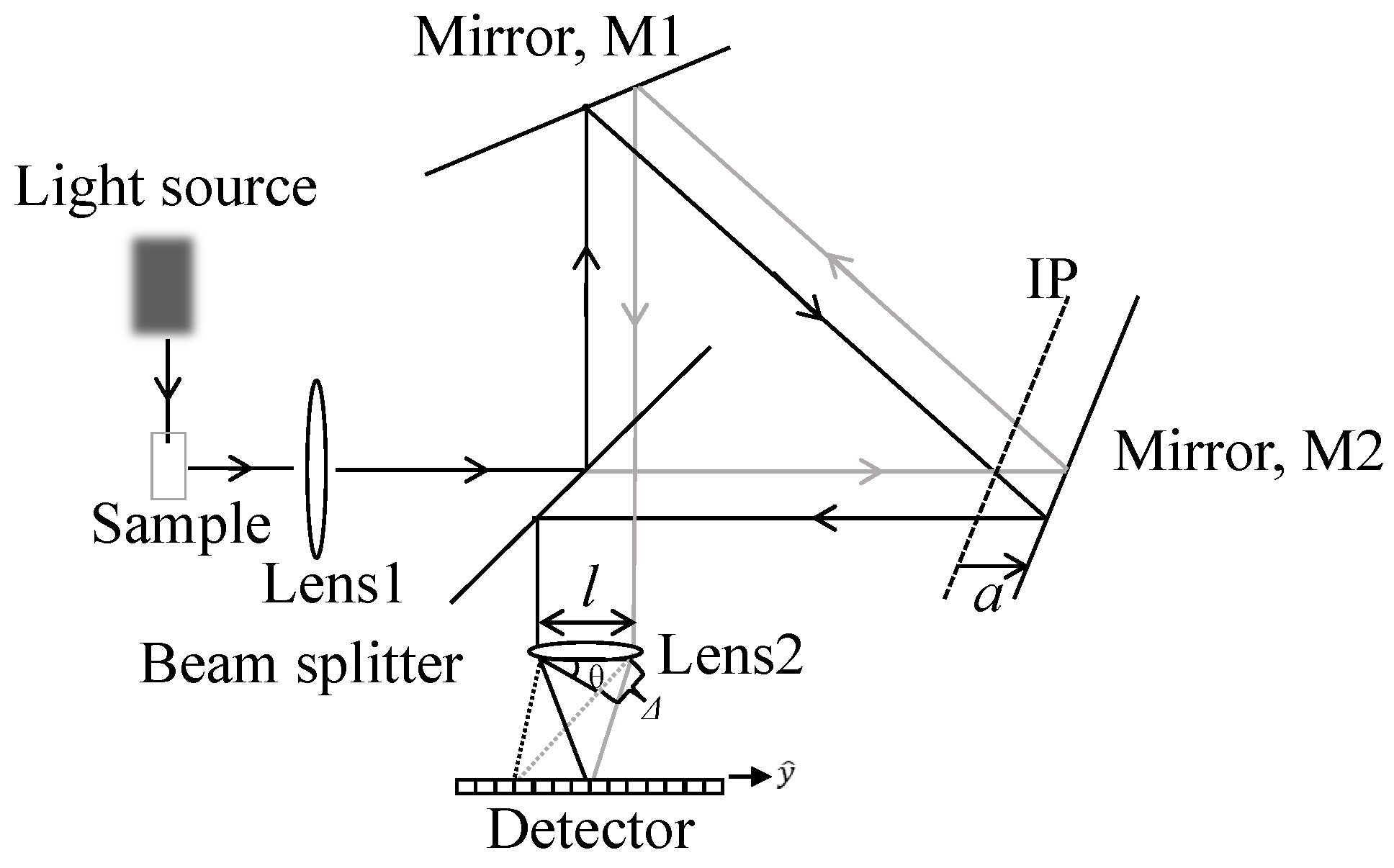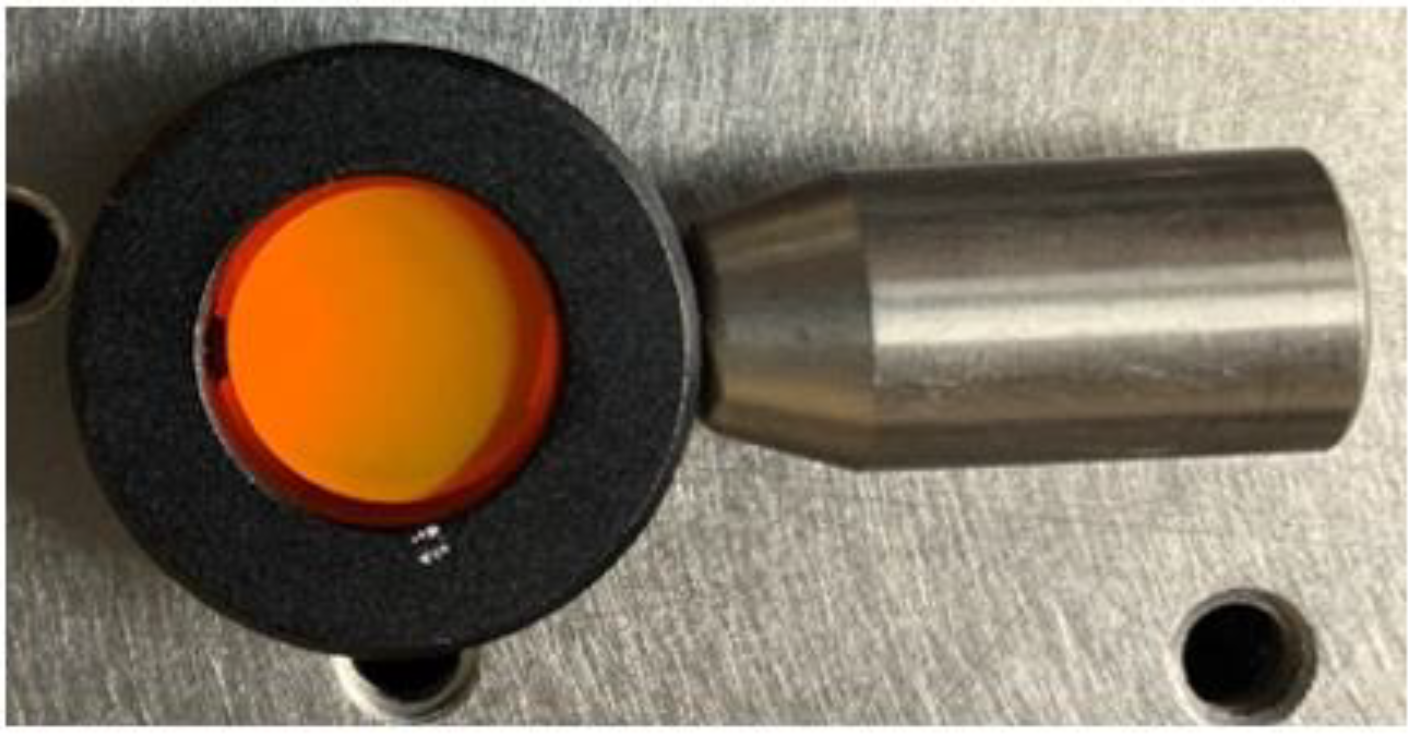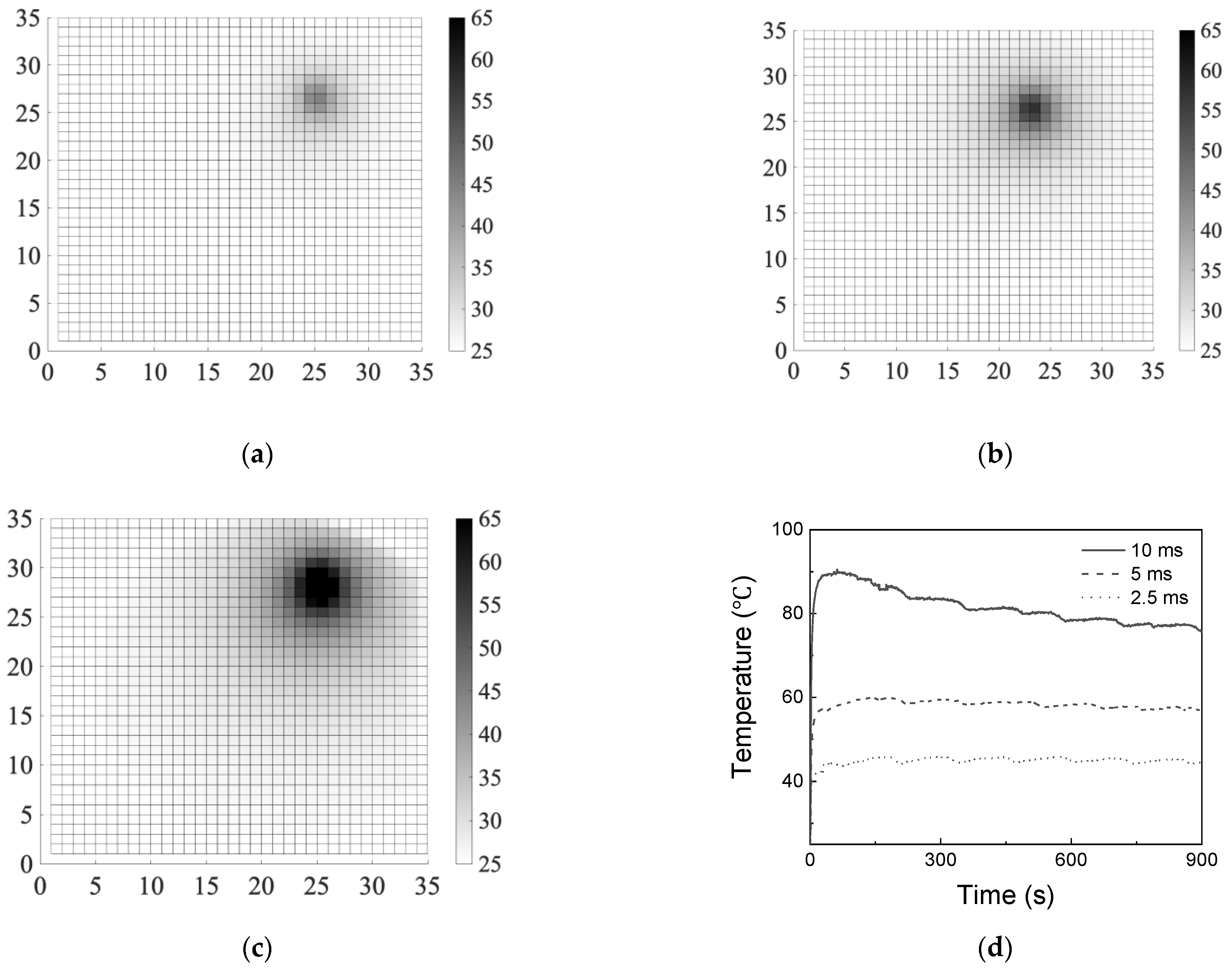Real-Time Measurement of Photodissociation with a Static Modulated Fourier Transform Spectrometer
Abstract
1. Introduction
2. Methods
2.1. A Static Modulated Fourier Transform Spectrometer Composed of a Modified Sagnac Interferometer
2.2. Experimental Setup
3. Results and Discussions
4. Conclusions
Author Contributions
Funding
Institutional Review Board Statement
Informed Consent Statement
Data Availability Statement
Acknowledgments
Conflicts of Interest
References
- Lin, X.; Zhou, F.; Li, H.; Zhao, H. Static Fourier-transform spectrometer based on Wollaston prism. Optik 2014, 125, 3482–3484. [Google Scholar] [CrossRef]
- He, J.; Zhang, Q. Design and analysis of a modified Sagnac interferometer for upper atmospheric wind measurement. Optik 2013, 124, 2658–2660. [Google Scholar] [CrossRef]
- Bai, C.; Li, J.; Xu, Y.; Yuan, H.; Liu, J. Compact birefringent interferometer for Fourier transform hyperspectral imaging. Opt. Express 2018, 26, 1703–1725. [Google Scholar] [CrossRef] [PubMed]
- Furukawa, H. Real-time multi-channel Fourier transform spectroscopy and its application to non-invasive blood fat measurement. Sens. Bio-Sens. Res. 2016, 8, 55–58. [Google Scholar] [CrossRef][Green Version]
- Zhang, C.; Yan, X.; Zhao, B. A novel model for obtaining interferogram and spectrum based on the temporarily and spatially mixed modulated polarization interference imaging spectrometer. Opt. Commun. 2008, 281, 2050–2056. [Google Scholar] [CrossRef]
- Kudenov, M.W.; Jungwirth, M.E.L.; Dereniak, E.L.; Gerhart, G.R. White light Sagnac interferometer for snapshot linear polarimetric imaging. Opt. Express 2009, 17, 22520–22534. [Google Scholar] [CrossRef] [PubMed]
- Cai, Q.; Xianli, B.; Huang, M.; Han, W.; Pei, L.; Bu, M. Prototype development and field measurements of high etendue spatial heterodyne imaging spectrometer. Opt. Commun. 2018, 410, 403–409. [Google Scholar] [CrossRef]
- Liu, Q.; Bai, C.; Liu, J.; He, J.; Li, J. Fourier transform imaging spectropolarimeter using ferroelectric liquid crystals and Wollaston interferometer. Opt. Express 2017, 25, 19904–19922. [Google Scholar] [CrossRef] [PubMed]
- Schardt, M.; Murr, P.J.; Rauscher, M.S.; Tremmel, A.J.; Wiesent, B.R.; Koch, A.W. Static Fourier transform infrared spectrometer. Opt. Express 2016, 24, 7767–7776. [Google Scholar] [CrossRef] [PubMed]
- Li, J.; Wu, H.; Qi, C. Compact static birefringent spectral range enhanced Fourier transform imaging spectrometer. Opt. Commun. 2018, 426, 182–186. [Google Scholar] [CrossRef]
- Watanabe, A.; Furukawa, H. High-resolution and high-throughput multichannel Fourier transform spectrometer with two-dimensional interferogram warping compensation. Opt. Commun. 2018, 413, 8–13. [Google Scholar] [CrossRef]
- Li, J.; Qu, C.; Wu, H.; Qi, C. Spectral resolution enhanced static Fourier transform spectrometer based on birefringent retarder array. Opt. Express 2019, 27, 15505–15517. [Google Scholar] [CrossRef]
- Cho, J.Y.; Lee, S.H.; Jang, W.K. Improvement of spectral resolution by signal padding method in the spatially modulated Fourier transform spectrometer based on a Sagnac interferometer. Appl. Opt. 2019, 58, 6755–6761. [Google Scholar] [CrossRef] [PubMed]
- Köhler, M.H.; Schardt, M.; Müller, M.; Kienle, P.; Wang, K.; Dong, X.; Giebeler, C.; Wiesent, B.R.; Jakobi, M.; Koch, A.W. Static Fourier transform mid-infrared spectrometer with increased spectral resolution using a stepped mirror. OSA Contin. 2020, 3, 2134–2142. [Google Scholar] [CrossRef]
- Frassetto, F.; Cocola, L.; Zuppella, P.; Deppo, V.D.; Poletto, L. High sensitivity static Fourier transform spectrometer. Opt. Express 2021, 29, 15906–15917. [Google Scholar] [CrossRef] [PubMed]
- Chiu, Y.-H.; Chang, T.-F.; Chen, C.-Y.; Sone, M.; Hsu, Y.-J. Mechanistic Insights into Photodegradation of Organic Dyes Using Heterostructure Photocatalysts. Catalysts 2019, 9, 430. [Google Scholar] [CrossRef]
- Sassin, N.A.; Everhart, S.C.; Dangi, B.B.; Ervin, K.M.; Cline, J.I. Fluorescence and Photodissociation of Rhodamine 575 Cations in a Quadrupole Ion Trap. J. Am. Soc. Mass Spectrom. 2009, 20, 96–104. [Google Scholar] [CrossRef] [PubMed][Green Version]
- Jang, W.K. Preparation of Polymethyl methalcrylate Rhodamine 6 G and Its Optical Property. Asian J. Chem. 2013, 25, 5631–5632. [Google Scholar] [CrossRef]







Publisher’s Note: MDPI stays neutral with regard to jurisdictional claims in published maps and institutional affiliations. |
© 2022 by the authors. Licensee MDPI, Basel, Switzerland. This article is an open access article distributed under the terms and conditions of the Creative Commons Attribution (CC BY) license (https://creativecommons.org/licenses/by/4.0/).
Share and Cite
Cho, J.Y.; Kim, H.; Lee, S.; Jang, W.K. Real-Time Measurement of Photodissociation with a Static Modulated Fourier Transform Spectrometer. Appl. Sci. 2022, 12, 3021. https://doi.org/10.3390/app12063021
Cho JY, Kim H, Lee S, Jang WK. Real-Time Measurement of Photodissociation with a Static Modulated Fourier Transform Spectrometer. Applied Sciences. 2022; 12(6):3021. https://doi.org/10.3390/app12063021
Chicago/Turabian StyleCho, Ju Yong, Hyoungjin Kim, Seunghoon Lee, and Won Kweon Jang. 2022. "Real-Time Measurement of Photodissociation with a Static Modulated Fourier Transform Spectrometer" Applied Sciences 12, no. 6: 3021. https://doi.org/10.3390/app12063021
APA StyleCho, J. Y., Kim, H., Lee, S., & Jang, W. K. (2022). Real-Time Measurement of Photodissociation with a Static Modulated Fourier Transform Spectrometer. Applied Sciences, 12(6), 3021. https://doi.org/10.3390/app12063021





